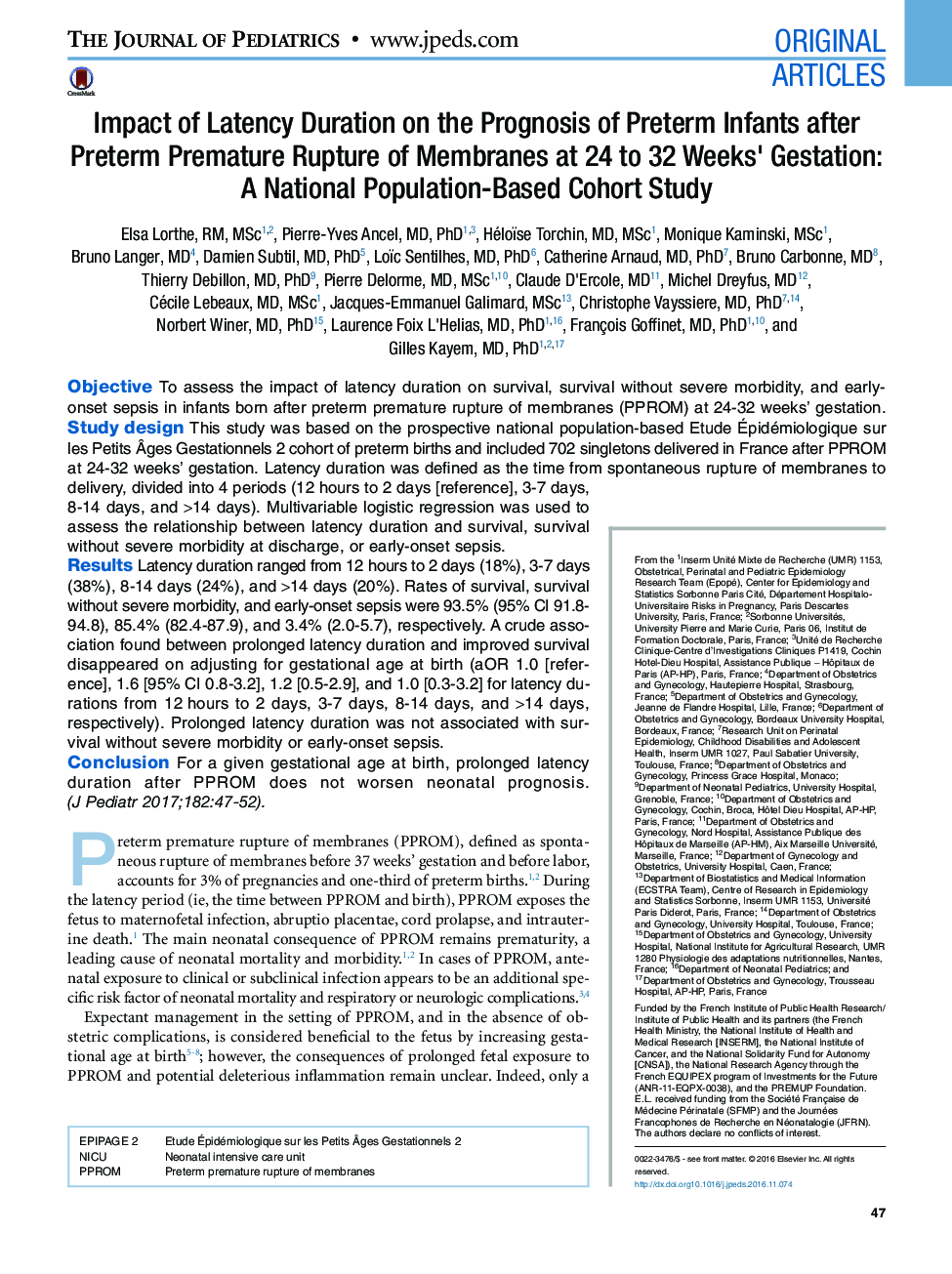| کد مقاله | کد نشریه | سال انتشار | مقاله انگلیسی | نسخه تمام متن |
|---|---|---|---|---|
| 5719651 | 1607417 | 2017 | 8 صفحه PDF | دانلود رایگان |
ObjectiveTo assess the impact of latency duration on survival, survival without severe morbidity, and early-onset sepsis in infants born after preterm premature rupture of membranes (PPROM) at 24-32 weeks' gestation.Study designThis study was based on the prospective national population-based Etude Ãpidémiologique sur les Petits Èges Gestationnels 2 cohort of preterm births and included 702 singletons delivered in France after PPROM at 24-32 weeks' gestation. Latency duration was defined as the time from spontaneous rupture of membranes to delivery, divided into 4 periods (12âhours to 2 days [reference], 3-7 days, 8-14 days, and >14 days). Multivariable logistic regression was used to assess the relationship between latency duration and survival, survival without severe morbidity at discharge, or early-onset sepsis.ResultsLatency duration ranged from 12âhours to 2 days (18%), 3-7 days (38%), 8-14 days (24%), and >14 days (20%). Rates of survival, survival without severe morbidity, and early-onset sepsis were 93.5% (95% CI 91.8-94.8), 85.4% (82.4-87.9), and 3.4% (2.0-5.7), respectively. A crude association found between prolonged latency duration and improved survival disappeared on adjusting for gestational age at birth (aOR 1.0 [reference], 1.6 [95% CI 0.8-3.2], 1.2 [0.5-2.9], and 1.0 [0.3-3.2] for latency durations from 12âhours to 2 days, 3-7 days, 8-14 days, and >14 days, respectively). Prolonged latency duration was not associated with survival without severe morbidity or early-onset sepsis.ConclusionFor a given gestational age at birth, prolonged latency duration after PPROM does not worsen neonatal prognosis.
Journal: The Journal of Pediatrics - Volume 182, March 2017, Pages 47-52.e2
